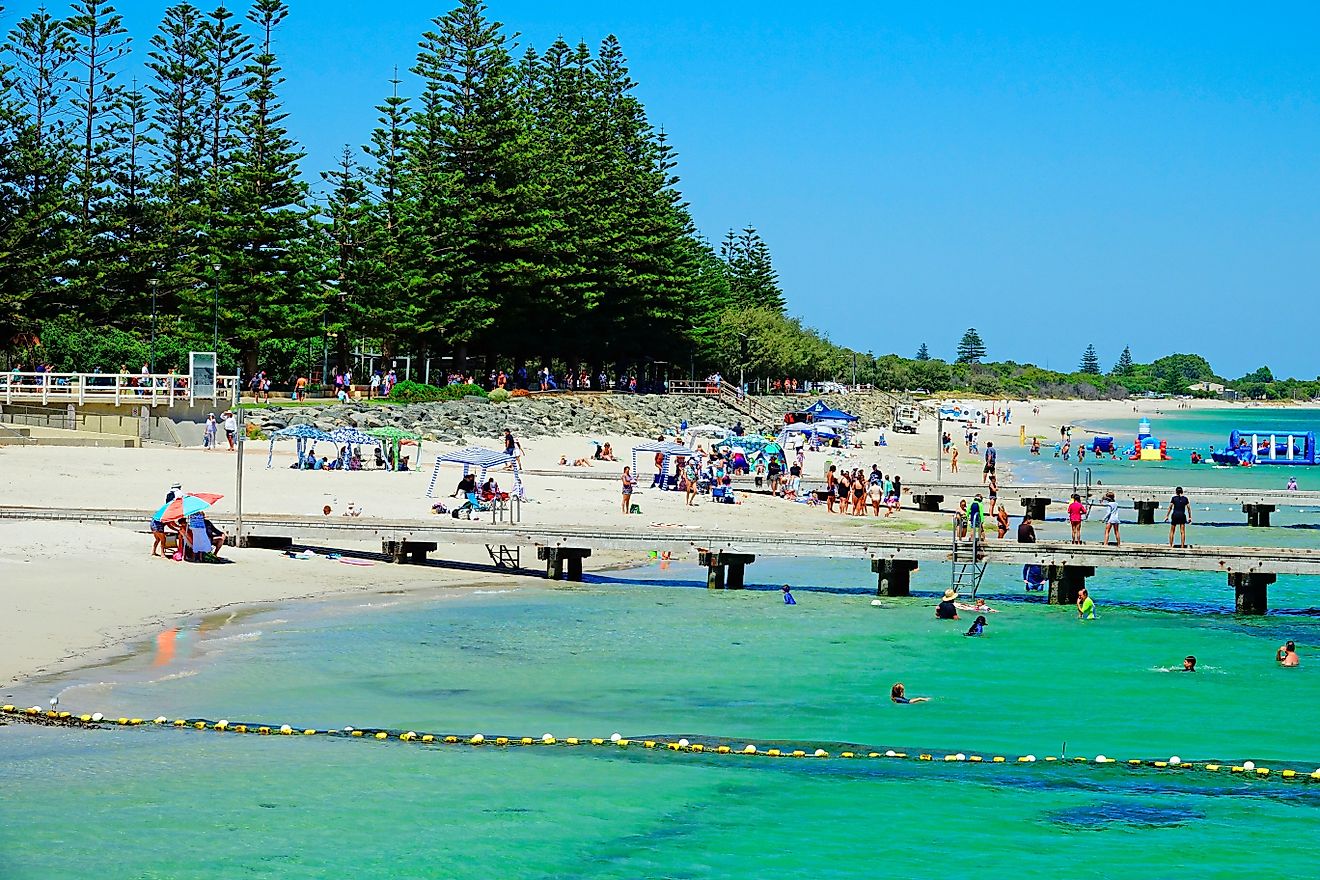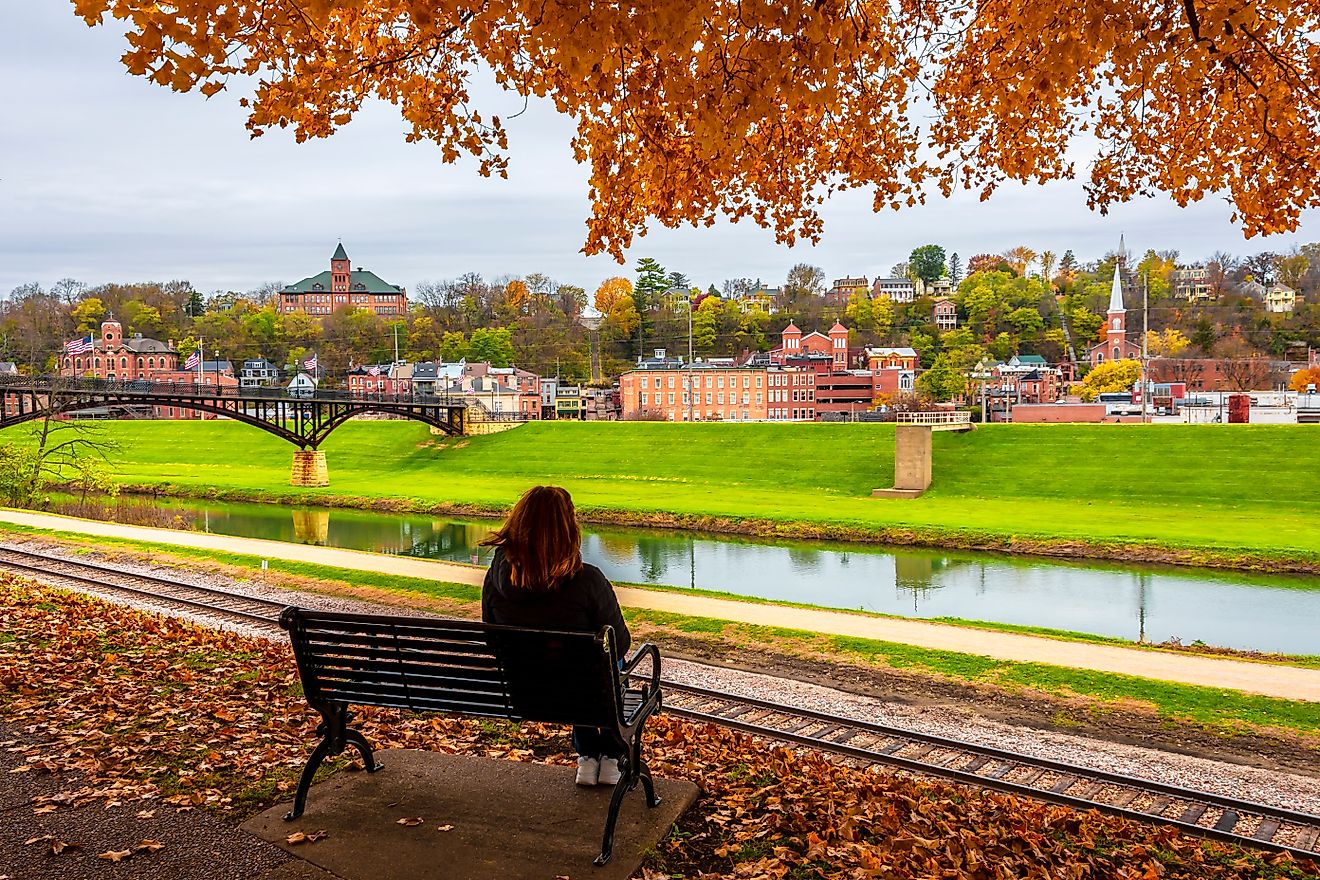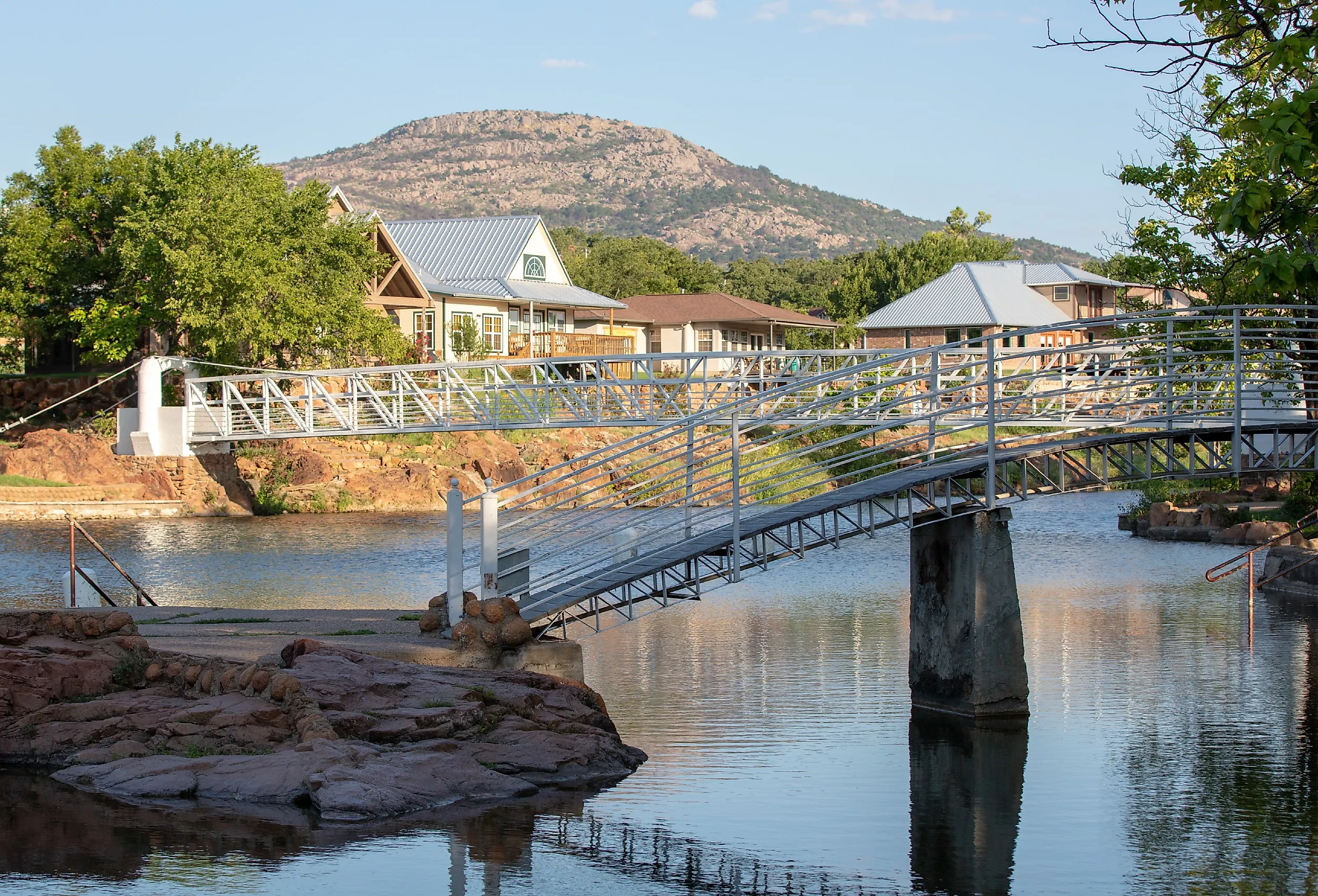
6 Fairy-Tale Small Towns In Oklahoma
Encompassing the most diverse array of Indigenous nations in the United States, with 39 federally recognized Native American tribes, Oklahoma's landscape stretches from the rocky edges of the Ozark Mountains in the east to Wichita's western rise. Often settling into a gentle and lasting impression, the southern state’s thriving wilderness, as seen in its protected prairies and forested hills, furthers its designation as the Sooner State. Between these spacious tracts lie spirited towns shaped by early settlers and enduring tribal customs, easing naturally into local traditions that feel almost storybook in their texture.
Memory and daily life meet beneath magnolia canopies and along cobblestone-laden streets, enriching these communities with a sense of presence and wonder. Rural customs live on through seasonal festivities, food drives, and musical parades that pass by century-old gas stations and trading posts. Whether blooming as Oklahoma’s Magnolia Capital or serving as keepers of Cherokee tradition, these towns lend voice to a past that still walks beside the present. These fairy-tale Oklahoma towns speak in stories that do not demand attention but reward pause with a quiet message of belonging.
Medicine Park
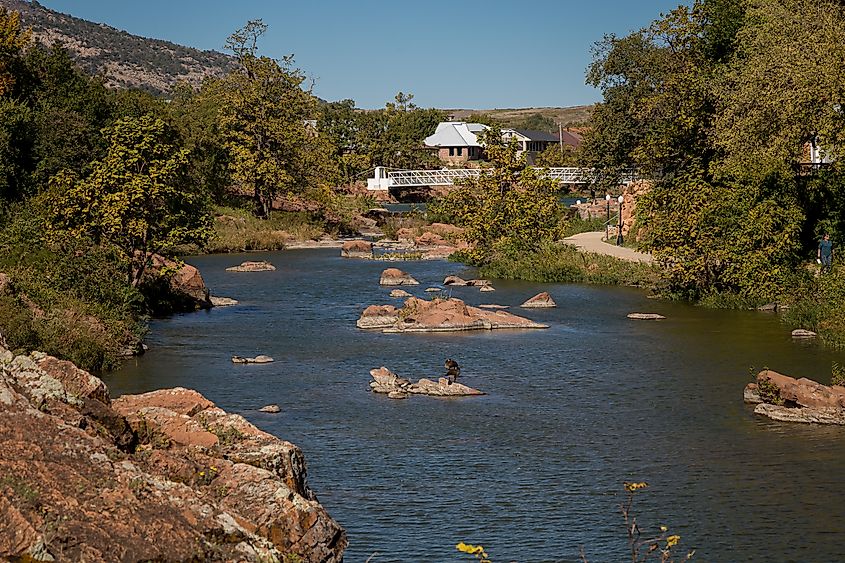
Medicine Park feels lifted from a painted folktale, its red cobblestone buildings and arched bridge over Medicine Creek set against the autumn fire of the Wichita Mountains. In fall, the slopes glow in russet and gold, completing the image as if from an illustrated page. Adding to this natural allure is Bath Lake, forming the center of the town’s life. Waterfalls spill into its deep and shallow pools, edged with the rounded red granite unique to the region. Since the 1920s, it has been both a summertime swimming hole and a winter spot where residents line the stone steps to fish for trout.
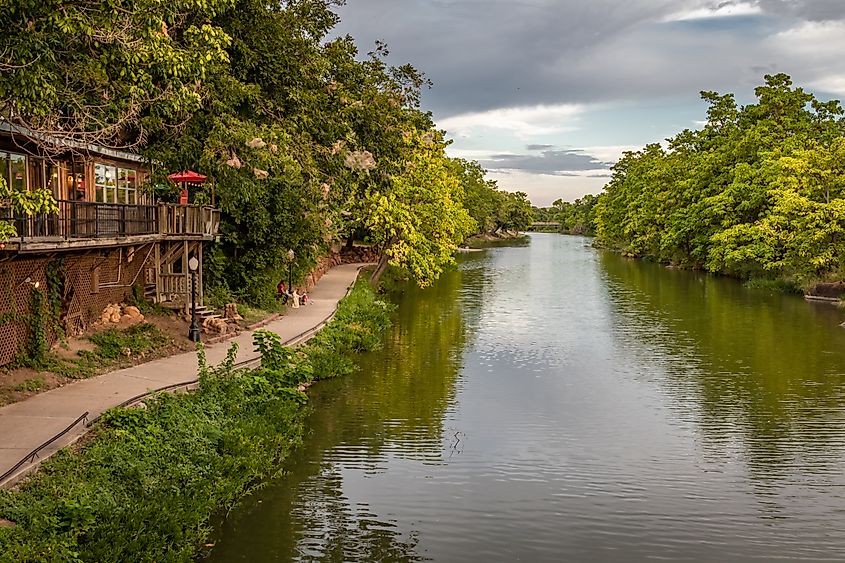
The surrounding Wichita Mountains Wildlife Refuge spans 60,000 acres of open prairie and granite peaks, home to bison, elk, prairie dogs, and Texas longhorn cattle. Each October, Medicine Park organizes the Flute Festival & Art Walk, celebrating Native American flute traditions and filling cobblestone streets with music and handcrafted art. The occasion plays out like the final sequence of a fable, with melodies drifting between stone walls as if the whole town had turned into a stage.
Grove
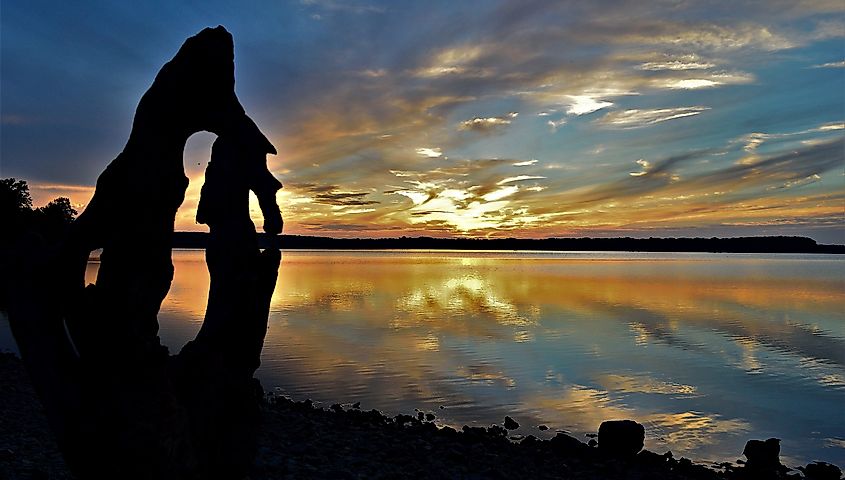
Grove rises along the shore of Grand Lake o’ the Cherokees, where water fans out in broad silver reaches and boats skim toward open water at first light. The lake holds its reputation as a prime spot for fishing tournaments, with anglers chasing bass beneath the occasional watch of osprey gliding past. Families drift toward quiet inlets for swimming and picnics, while sailboats cut the horizon on clear afternoons. Just beyond the shoreline, Lendonwood Gardens spreads in a quilt of color. Paths lead through species like Japanese maples, azaleas, and spring-fed koi ponds, mirroring shifting clouds. Each turn reveals another pocket of blooms, as the air changes with lilac in spring or roses in midsummer.
On the town’s edge, Har-Ber Village Museum takes you on a walk through the pioneer era, its wood-frame storefronts giving weight to the stories of early Oklahoma settlers. Culturally, Grove takes its enchantment a step further, as summer brings the American Heritage Music Festival. From fiddle strings to banjo beats, warm evenings are accompanied by contestants squaring off in music and dance. Food stalls line the park with barbecue, fry bread, and sweet tea as Grove’s waters and gardens fold together into a place that feels as if it stepped out of an illustrated tale.
Tahlequah
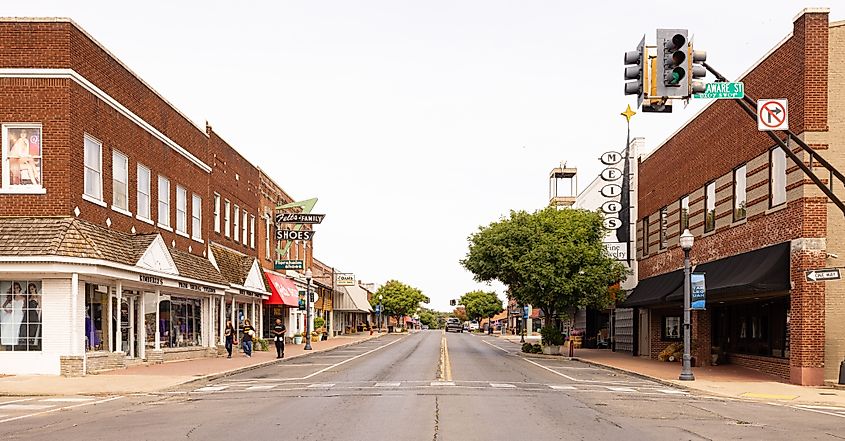
Tahlequah lies where the subtropical grasses of Oklahoma meet the Ozark Plateau, spilling in from Arkansas, its limits edged with lakes that keep the horizon bright. Museums present the city’s role as the Cherokee Nation's historical capital, telling its history with the air of a storybook. The Cherokee National History Museum leads through centuries of traditions and resilience. Across the street, the Supreme Court Museum showcases original documents, antique furnishings, and the chamber where early Cherokee legal decisions were made. Beside it, the Cherokee National Prison Museum features cells, workrooms, and displays of frontier law enforcement that seem almost lifted from legend.
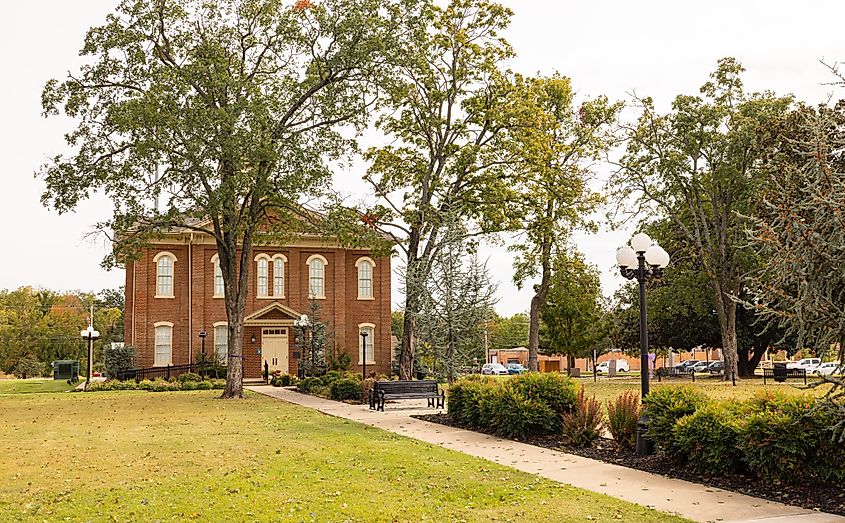
The town’s calendar swells with gatherings, most famously the Red Fern Festival each spring, when food vendors, music stages, and games fill the streets in tribute to Wilson Rawls’ classic novel.
Durant
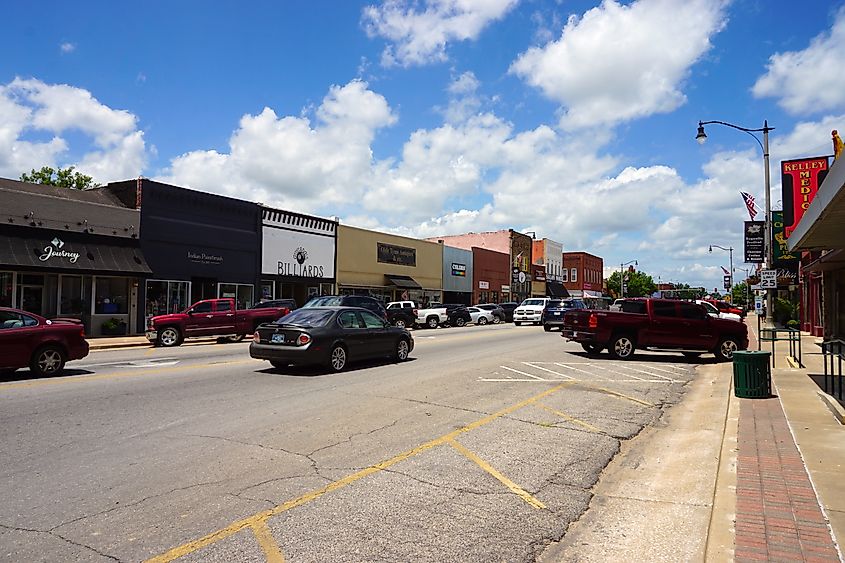
Durant celebrates its title as Oklahoma’s Magnolia Capital each spring when the blooms brighten streets and parks, echoing the city’s pride in its floral emblem. The theme carries into public art, from the World’s Largest Peanut sculpture to old murals lining the Magnolia Mile Art Alley, where splashes of color turn the block into an open-air gallery. The Magnolia Festival, held the weekend after Memorial Day, brings this lively community into full celebration mode. Live performances, food vendors, and beauty pageants fill the calendar, while families enjoy carnival rides and local crafts.
The tree-lined streets in downtown Durant also reflect its merry allure, with storefronts that keep the festivities going year-round. Moreover, history lovers gravitate toward the Three Valley Museum, where exhibits trace the Choctaw Nation’s story from Native American heritage through the arrival of settlers in the 1870s and beyond. Dioramas, artifacts, and period rooms create a vivid walk through time. Durant’s location between Dallas and Fort Worth, Texas, and Lake Texoma, with the storied Fort Washita nearby, fosters a broader amalgamation of the charm of Oklahoma and Texas, where heritage, celebration, and outdoor beauty converge in one vibrant hub.
Chandler
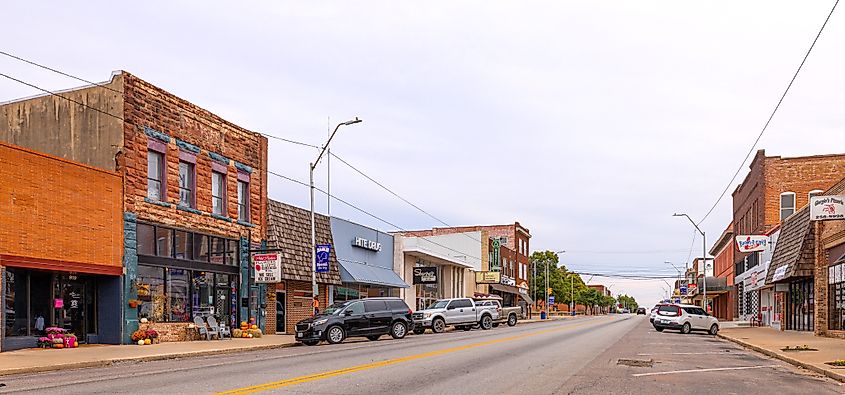
Chandler anchors central Oklahoma with a wide Main Street whose streetscape defines its territorial past. Here, the Lincoln County Museum of Pioneer History details the settlement era with intricate displays, before the path splits from Manvel Avenue and guides you to the Route 66 Interpretive Center. This site offers a significant glimpse into the town’s heritage and the architectural brilliance accompanying the Mother Road. Among Chandler’s landmarks stands the small, stone Gothic Revival structure of St. Stephen’s Episcopal Church. This pyramid-like silhouette has marked the skyline since before the onset of the 20th century.
In addition to its many historic sites, the Lincoln County seat bursts with vibrant colors. The old Chandler Bookstore’s vivid red walls, themselves recognized on the National Register of Historic Places, keep the town’s timeline tangible. Even utilitarian buildings carry a surreal and outlandish allure. Seaba’s Filling Station, with its brick walls and an age that rivals that of the modern automobile itself, is a reminder that here, even gas stations are chapters in history.
Guthrie
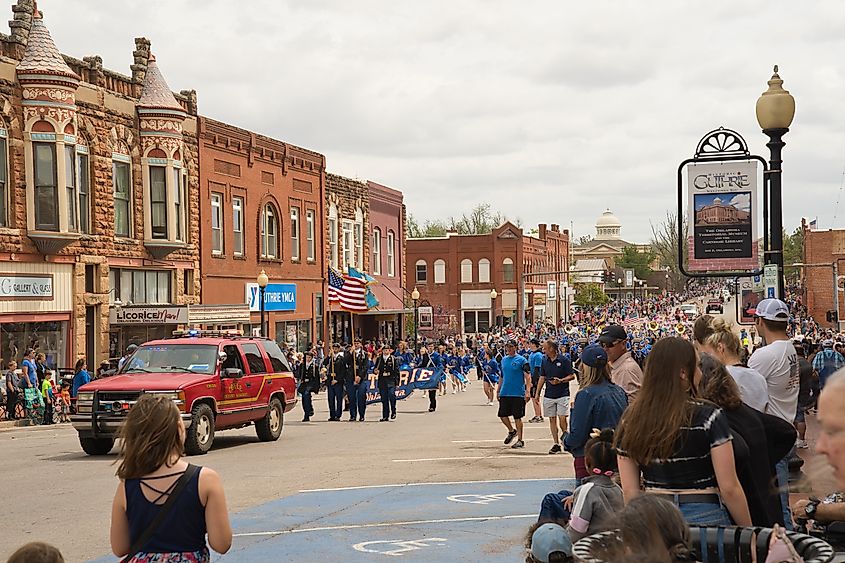
North of Oklahoma City, yet removed from its jostling and urban cadence, Guthrie unfolds like a storybook capital. The Guthrie Historic District evokes a kingdom from picture books, where century-old landmarks rise alongside fortresses. Chief among them is the Logan County Courthouse, a four-storey buff brick building. Nearby, the Oklahoma Territorial Museum promotes another corner of history alongside the Revival-style Carnegie Library, a 1902 treasure whose columns and symmetry embody the aspirations of the early territorial era.
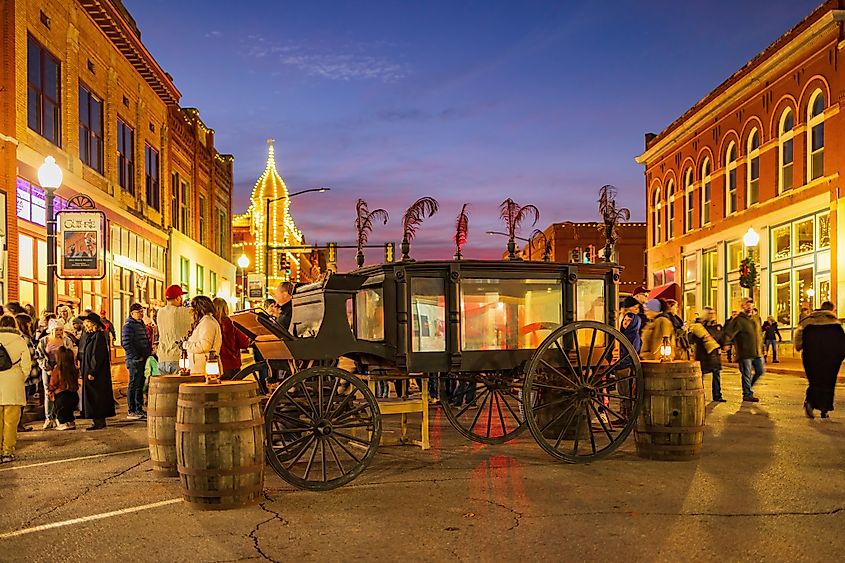
Though Guthrie’s streets brim with vintage exteriors, the town also entertains with more immediate pleasures. Missy’s Donuts & Bakery fills its cases with local favorites, sweetening mornings for residents and travelers alike. At the northern edge, the Cimarron River bends the town’s fairy-tale allure toward the gothic, where Guthrie Haunts mixes scary corridors with the glow of friendly campfires. To the south, the twin expanses of Guthrie and Liberty Lakes bring the pace back to a slower enchantment. In addition to recreation, the nearby campgrounds and cottages allow visitors to absorb Oklahoma’s charisma up close, which feels almost surreal.
Oklahoma Blooms With Legends and Landscapes
Oklahoma astonishes with its layered terrain extending between wooded hills and open plains, from the Ozark foothills near Tahlequah, where the Cherokee people cultivated a magnificent civilization, to Grove’s quiet Lendonwood Gardens and the wide waters of Grand Lake o’ the Cherokees. It threads its Indigenous legacy through the broader story of the South and Midwest, home to the Cherokee, Comanche, and many other Native tribes whose presence continues to define the land. Whether wandering through Chandler’s vintage lanes along Route 66 or joining locals in Medicine Park during the Flute Festival & Art Walk, the Sooner State invites you to slow your pace. This travel season, consider discovering a side of Oklahoma that speaks not in volume, but with lasting meaning.
